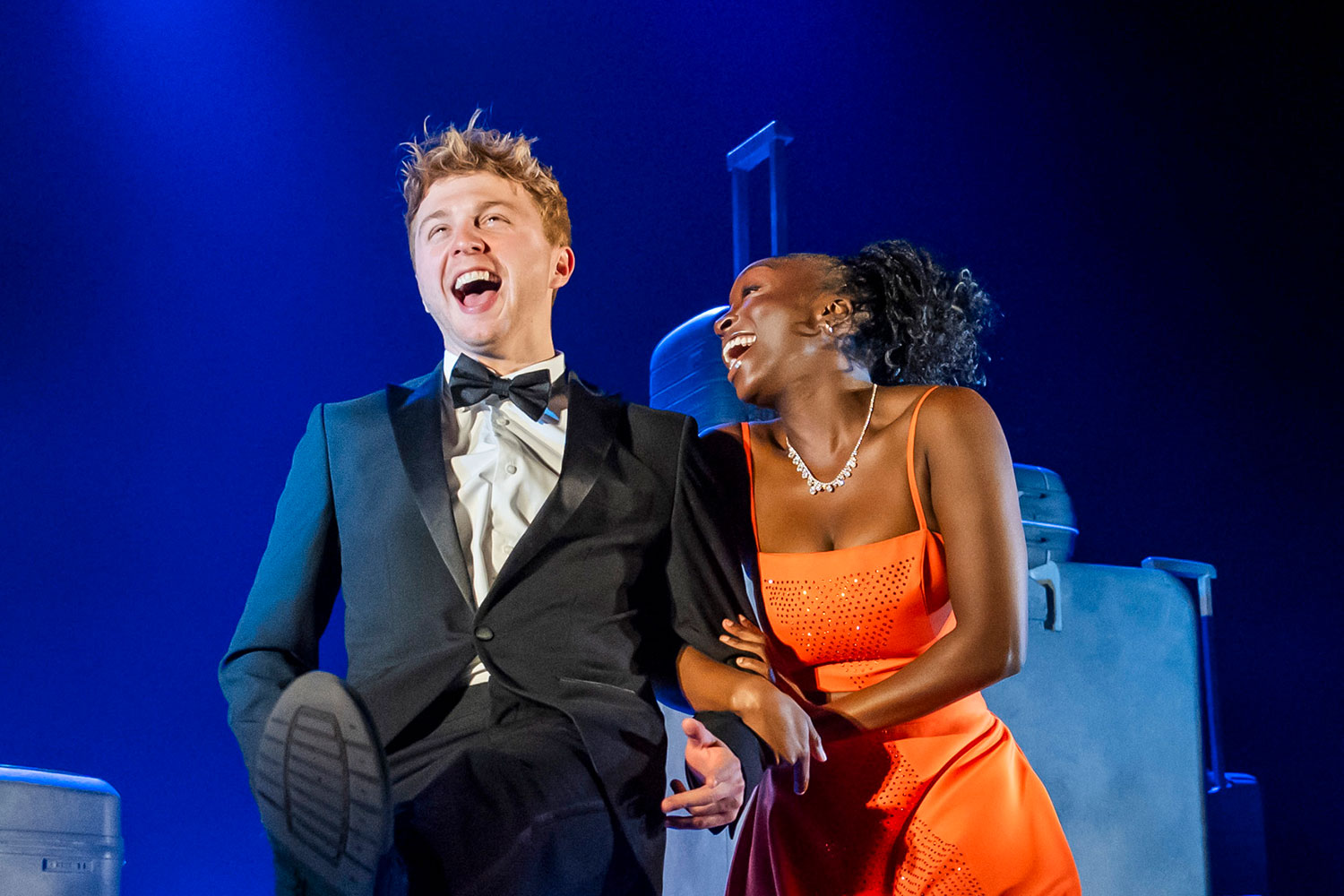Lady in the Van
The Lady in the Van at the Queen’s Theatre
 ‘Old ladies are my bread and butter,’ says Alan Bennett in his new play, The Lady in the Van, and that is certainly true when it comes to the old dear of the title. Miss Shepherd, a real-life lady tramp, pulled up in front of Bennett’s home in Camden, north London, for what was supposed to be three months and ended up staying 20 years, until her death in 1989. For Bennett, though extenuated, it was a fruitful tenancy as he’s used Shepherd repeatedly in book, radio and now stage form.
‘Old ladies are my bread and butter,’ says Alan Bennett in his new play, The Lady in the Van, and that is certainly true when it comes to the old dear of the title. Miss Shepherd, a real-life lady tramp, pulled up in front of Bennett’s home in Camden, north London, for what was supposed to be three months and ended up staying 20 years, until her death in 1989. For Bennett, though extenuated, it was a fruitful tenancy as he’s used Shepherd repeatedly in book, radio and now stage form.
And why not? Bennett is a writer after all and, as one of his neighbours observes in the play, ‘In this drab world called art, she Shepherd is about as close as you come to character.’ Irresistible. Which, though the title might suggest otherwise, is really what this play is about – Bennett’s tussle to set aside scruples and indulge his more callous writerly tendencies for exploiting the situation.
In case there was any chance we might miss this point, Bennett presents us with two on-stage versions of himself. There’s Alan Bennett 1 (Kevin McNally), the hyper-cynical inner writer, and Alan Bennett 2 (Nicholas Farrell), the more timid person who interacts with the outside world. Looking like evil twins, with identical dress and mannerisms, both McNally and Farrell ably tease out the contrary aspects of the writer’s split personality. In addition to his artistic dilemma, we get Bennett’s guilt over the other old lady in his life, his delusional and institution-bound mam, his insecurities with fame and veiled references to his homosexuality.
 As for Miss Shepherd, she takes the on-stage form of that singular dame, Maggie Smith. This is a role unlike any other you will ever have seen Smith in. She appears, almost unrecognisably, in baggy rags and Rambo baseball cap, her back hunched, feet splayed and face smeared with grime. And, over the course of the evening, she delights in showing Shepherd at her quirkiest – dictating a letter to the Pope, making excuses for her bodily pong or fretting over how she’ll conduct her prime ministerial duties from the van – with eyes bulging and cheeks twitching.
As for Miss Shepherd, she takes the on-stage form of that singular dame, Maggie Smith. This is a role unlike any other you will ever have seen Smith in. She appears, almost unrecognisably, in baggy rags and Rambo baseball cap, her back hunched, feet splayed and face smeared with grime. And, over the course of the evening, she delights in showing Shepherd at her quirkiest – dictating a letter to the Pope, making excuses for her bodily pong or fretting over how she’ll conduct her prime ministerial duties from the van – with eyes bulging and cheeks twitching.
At first, the effect of all of this – set against Mark Thompson’s dignified Camden crescent -feels fresh and inventive, but in the end, The Lady in the Van does not deliver on its early promise. Through no fault of the performers or Nicholas Hytner’s adept direction, the play, like Miss Shepherd’s immobile van, just hasn’t got the gas to go anywhere. By basing his script so much on real people and, albeit loose, ‘facts’, Bennet has missed out on inventing a tale with real punch. As a result, the evening is all character and no plot.










